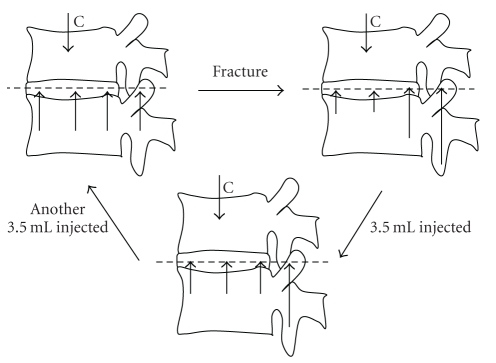Figure 3.
Diagram summarising the changes in load bearing by vertebrae following fracture and vertebroplasty. The length of the upward pointing arrows represents load bearing by different regions of the vertebra. Before fracture (A), the compressive load is borne mostly by the anterior column (disc and vertebral bodies) and stress is distributed evenly across the disc and adjacent vertebral bodies. After fracture (B), stress falls in central and anterior regions of the disc and increases in the posterior annulus and neural arch. Injecting 3.5 ml of cement into the fractured vertebral body (C) causes stress to be distributed more evenly across the disc, but loading on the neural arch remains elevated. Injecting a further 3.5 ml of cement restores neural arch load bearing towards pre-fracture levels (A). Based on data from Luo et al. [84].

